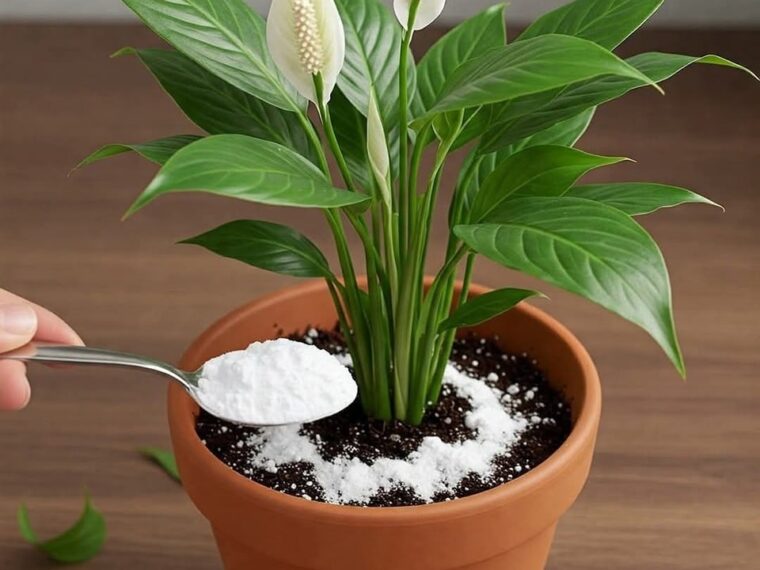Forget about using plain water to care for your peace lily—there’s a simple alternative that can dramatically improve its health and longevity. A few small changes in how you nourish this beautiful plant can make its leaves greener, its blooms more vibrant, and its overall growth more vigorous. Here’s everything you need to know to keep your peace lily thriving for years to come.
Discovering the Elegance of the Peace Lily
Peace lilies are beloved for their luxurious, glossy green leaves and striking white spathes, which give the impression of flowers. They are not only aesthetically pleasing but also powerful natural air purifiers, capable of removing common toxins like benzene, formaldehyde, and trichloroethylene from indoor environments.
Native to tropical regions of the Americas, peace lilies (genus Spathiphyllum) are technically part of the arborvitae family. Unlike many plants that grow from stems, peace lily leaves emerge directly from a rhizome, which allows the plant to spread gracefully over time.
What appears to be a flower is actually a specialized leaf called a spathe. The spathe wraps around and protects the actual flower—called a spadix—which is a cluster of tiny, densely packed blooms. This unique structure adds to the peace lily’s elegant appeal and makes it a favorite among indoor plant enthusiasts.
Despite their tropical origins, peace lilies are surprisingly easy to care for, provided they receive the right nutrients, moisture, and environment. They are perfect for beginners and seasoned gardeners alike.
Why Plain Water Isn’t Enough
Many people assume that watering with plain tap water is sufficient for peace lilies. While these plants are hardy, plain water often lacks the minerals and nutrients necessary to support lush growth and extended flowering periods. Over time, this can result in dull leaves, weak stems, or yellowing foliage.
Tap water can also contain chlorine or fluoride, which may damage delicate leaves or disrupt the rhizome’s ability to absorb nutrients. Even filtered water may not provide the specific trace minerals that peace lilies thrive on.
This is where the alternative comes in: watering with a nutrient-rich solution can dramatically improve your plant’s vitality.
The Secret Watering Solution
Experts recommend using a natural, nutrient-rich mixture instead of plain water. One of the most effective options is diluted organic fertilizer or compost tea. This solution provides essential macro- and micronutrients, such as nitrogen, phosphorus, potassium, magnesium, and trace elements, all of which support healthy leaf growth and prolonged blooming.
How to Prepare a Simple Nutrient Solution:
- Compost Tea Method:
- Take a small handful of mature compost.
- Place it in a cloth bag or strainer.
- Soak it in a liter of water for 24–48 hours.
- Use the liquid to water your peace lily. This provides slow-release nutrients and beneficial microorganisms that improve soil health.
- Diluted Organic Fertilizer:
- Use a balanced liquid fertilizer (for example, 10-10-10 NPK) and dilute it to half the recommended strength.
- Water your peace lily with this solution every 2–3 weeks during the growing season.
- Natural Alternatives:
- Banana Peel Water: Chop a banana peel and soak it in water for 24 hours; use the liquid for watering. It provides potassium and phosphorus, both essential for flowering.
- Epsom Salt Solution: Dissolve a teaspoon of Epsom salt in a liter of water to supply magnesium and sulfur, promoting greener leaves and stronger stems.
These alternatives ensure that your peace lily receives more than just hydration—they provide the nutrients necessary to sustain growth, enhance bloom longevity, and improve resistance to pests or diseases.
Optimal Care Beyond Water
While a nutrient-rich solution is essential, other factors also influence the health and beauty of your peace lily.
Light Requirements
Peace lilies prefer bright, indirect light. Direct sunlight can scorch the leaves, while too little light may prevent flowering. A spot near an east- or north-facing window is ideal.
Temperature and Humidity
Being tropical plants, peace lilies thrive in warm temperatures between 65°F and 80°F (18°C–27°C). They also enjoy high humidity, so misting leaves occasionally or placing a humidity tray nearby can be beneficial.
Soil and Potting
Use well-draining, nutrient-rich soil, preferably a mix designed for tropical or indoor plants. Repot every 1–2 years to refresh the soil and provide space for the rhizome to expand.
Pruning and Cleaning
Trim yellow or damaged leaves to encourage new growth. Wipe the leaves with a damp cloth occasionally to remove dust, which improves photosynthesis and keeps the plant looking vibrant.
Signs Your Peace Lily Needs Nutrients
Next page





